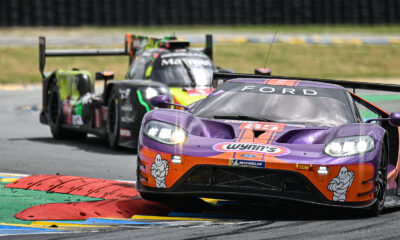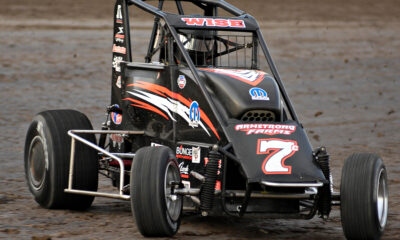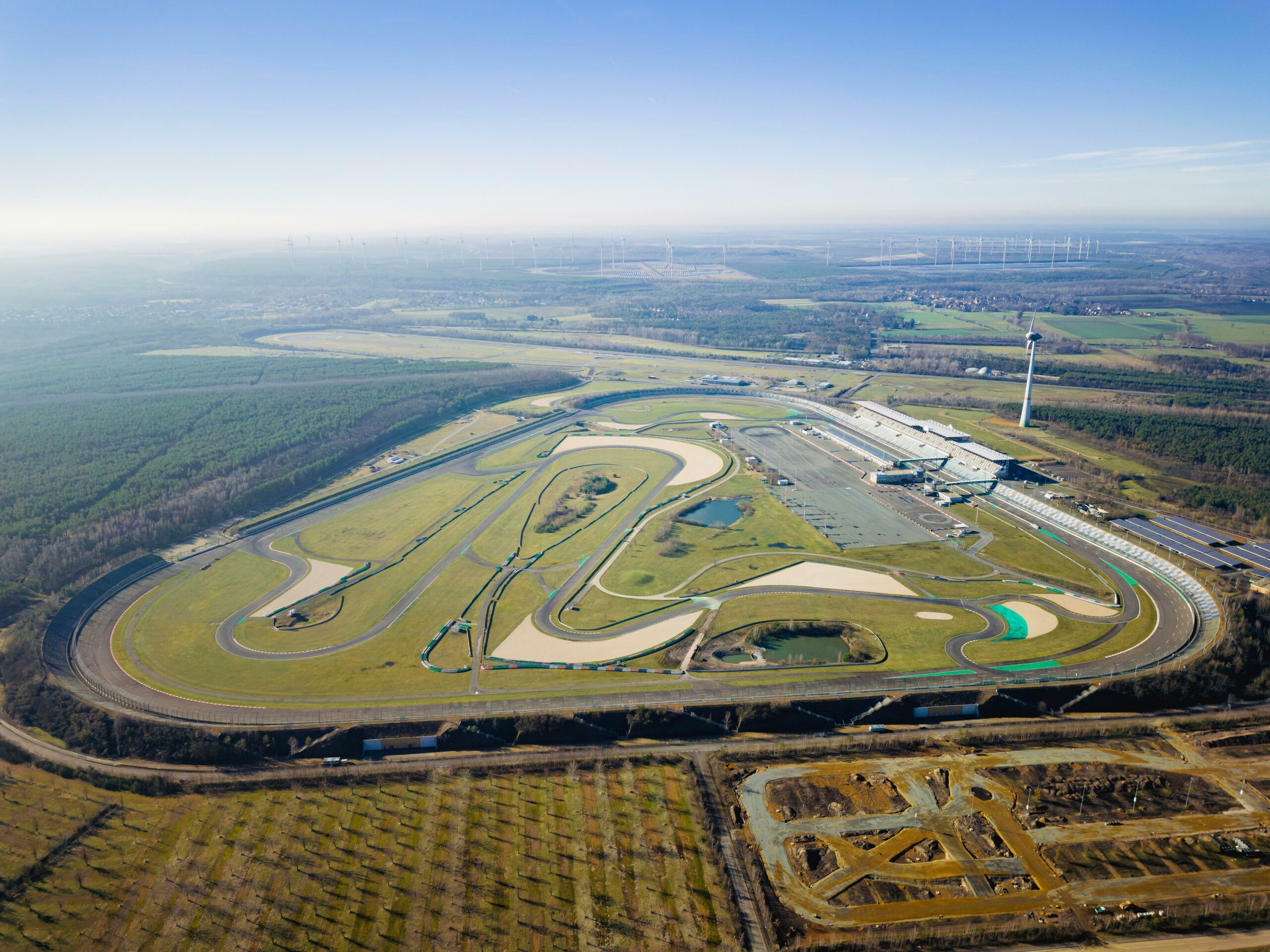
When NASCAR fans think about a racetrack that is in the shape of a triangle, they probably are thinking of Pocono Raceway. The track has the nickname of the “tricky triangle” and is located in Long Pond, Pennsylvania. But there is another “triangle” shaped track known to global racing enthusiasts located in Klettwitz Brandenburg, Germany named Lausitzring.
Lausitzring has a history that some say dates to the cold war and before the fall of the Berlin Wall. Apparently, gear heads and race fans are around no matter what the political climate is! That holds true for Lausitzring as some historians point to conversations for a testing and racing facility being constructed by East Germany as far back as 1986.
After The Fall of the Berlin Wall
Let’s jump ahead to 1998 when construction began on Lausitzring which was at the time called EuroSpeedway Lausitz. The facility would be a needed replacement for the famed AVUS track. AVUS is an acronym that translates to Automobile traffic and training road. It was an incredibly dangerous paperclip track located in Berlin that opened in 1921 as an “automobile only” road and that closed in 1959.
Construction and planning on AVUS started prior to and during World War One. It was known for its high-speed turns and long straights. The steep-banked turn was known as the “Wall of Death” to drivers and fans. There was no retaining wall or fence so drivers that entered the turn wrong could fly off the side of the track.
Jean Behra, of France, died when his car fishtailed in the Curve. He was ejected from the car and killed as his body hit a flagpole. In 1926, Adolf Rosenberger sped into a building holding scoring officials killing all three of the occupants.
There were other venues in Germany but nothing like a high-speed circuit such as AVUS. The Berlin Wall fell in 1989 and the early developmental stages of building Lausitzring started to take shape. One reason was that a united Berlin meant more commuter traffic and AVUS was a street circuit.
Construction Begins
Early plans focused on an open mine site near Brandenburg as the location of the AVUS replacement venue. This was around 1991 and by 1995 local authorities gave approval for the project. Now full planning and site development could be started. Ground was broken in 1998.
Things progressed at a fast pace and the giant venue was quickly beginning to take shape. The testing oval, which would be the part of the facility that mimicked AVUS the closest, would be almost four miles with two long straights and shorter, but banked, looping turns. This would be a massive departure from the dangerous layout of AVUS.
The other main track would be designed similarly to the layout of Pocono Speedway which hosts NASCAR races in the United States. This track is also a triangle-shaped high-speed oval – only slightly shorter than Pocono which measures 2.5 miles (4.023km) while Lausitzring checks in at 2 miles or 3.218km.
The two tracks were designed with a connector part that allowed the venue to be used as a massive road-course. By using portions of both tracks with the connection portions of race track the road course setup could be stretched out to an impressive 7.5 miles! Shorter variations of road courses could be configured within the triangle track.
While construction of the track surface was underway the main grandstands were put in place overlooking the triangle venue. In fact, most of the seating and amenities for race fans were centered around the Lausitzring triangle. The finished main grandstands could hold 25,000 fans while bleacher-style seating located around the facility could pack in another 100,000 spectators.
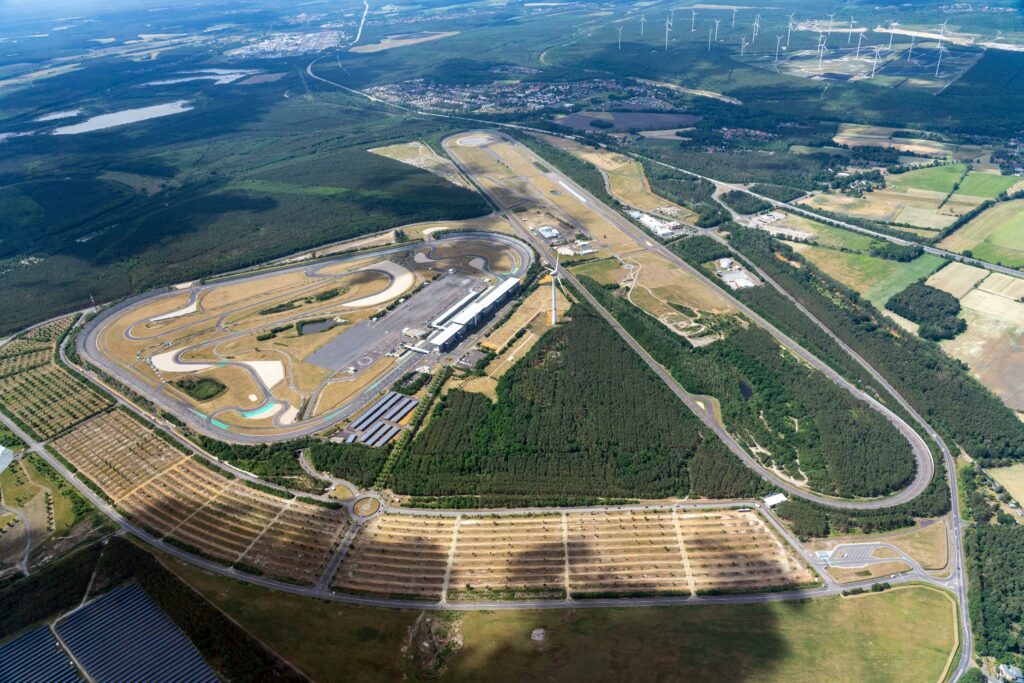
A Rough Grand Opening
Eurospeedway Lausitz, the name at the time of opening, came in 2000 with an estimated 80,000 spectators on hand. The opening races included the IDM Superbike Series followed by Deutsche Tourenwagen Masters (DTM) Series. Both were hugely successful in their openings at the track despite one of the two scheduled DTM races being canceled due to rain.
Other car and motorcycle racing series also made use of the track over the first few seasons including the NASCAR inspired ASCAR Series, the CHAMP Car Series, the FIA GT Championship, the FIA Sportscar Championship, and many others.
However, there were some dark days associated with the first years of operation that are permanent reminders of how dangerous racing can be. Michele Alboreto, a well-known F1 driver and veteran competitor, was driving an Audi R8 prototype along the test portion of the track. He was with a group of Audi engineers preparing for the 24 Hours of Le Mans.
As Alboreto reached a speed of 190 mph his car suffered a left rear tire puncture from what was found to be an errant screw. His car tumbled over the barrier landing upside down killing him instantly on April 25, 2001.
A week later, in May 2000, tragedy struck again. Racing marshal Uwe Wagner was part of a testing session before the upcoming Deutsche Tourenwagen Challenge race. A front spoiler from a BMW slid across the track surface and as Wagner attempted to remove it from the track, he was struck by an Opel Astra piloted by Sandro Vogel. The 43-year-old husband and father of two was killed on impact.
Then, in September of 2001, a gruesome wreck occurred during the Champ Car German 500. Alex Zanardi was picking up speed exiting the pits on the tri-oval when he spun. Alex Tagliani could not avoid Zanardi and crashed his car straight into the spinning vehicle. Zanardi survived but lost both his legs just above his knees as a result. Tagliani escaped with minor injuries.
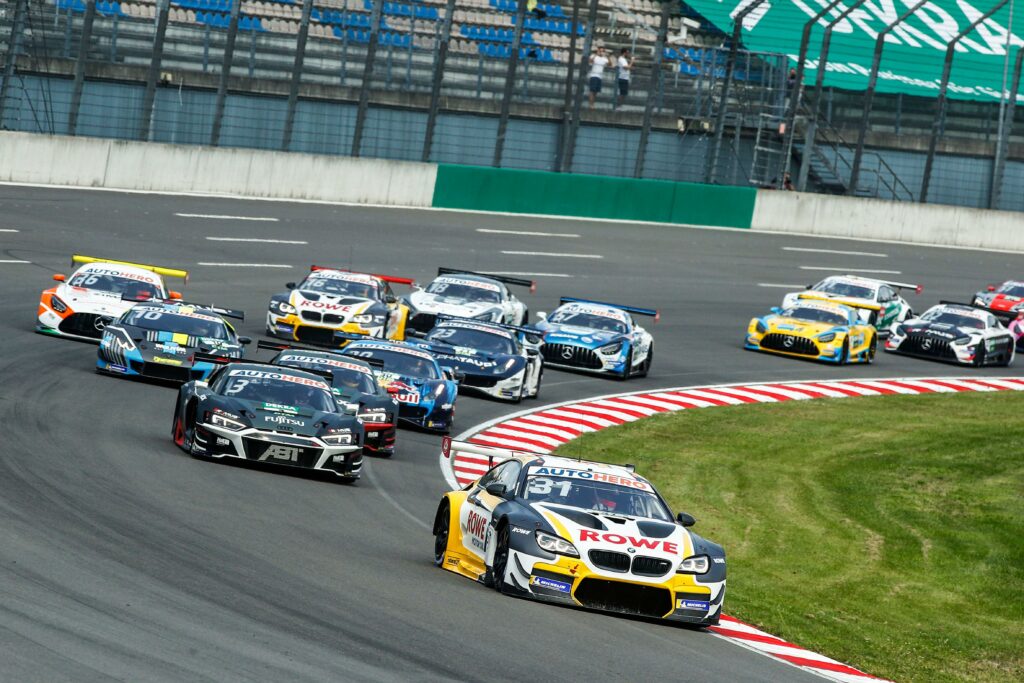
The Venue Gains Traction
Despite the list of horrific events, and a lending crisis at the Bank of Berlin forced a brief shutdown in 2002, the facility was slowly becoming a notable track among race fans. The track reopened with new leadership after the short financial issue with the Bank of Berlin. The CART Champ Car Series made a return to the schedule and other racing series followed.
One moment brought fans from all over the racing world as Alex Zanardi returned from his near-fatal wreck to pilot a modified Champ Car around the triangle oval. This symbolically completed his last 13 laps from the race where he lost his legs. Over 100,000 fans cheered him as he crossed the finish line.
Over the next decade the mixed-use facility saw several racing series come and go with a combination of tri-oval and road course races. The test track was also put into use by manufacturers on a regular basis.
The venue was also able to adapt to the needs of racing Series and fans. The combo circuit that combined both tracks into a massive road course did not catch on with race fans. Track officials noticed this, and road course races were held on the shorter road circuit.
The reason was that the majority of fans could not see the action taking place when racing was taking place on the test track surface. However, the large grandstands allowed for near perfect viewing of the entire tri-oval and smaller road course. Organizers also noted that the biggest drawing events seemed to be those that were road course races so less racing took place solely on the NASCAR-style track.
The schedule for the next decade included open wheel racing, touring car events, fan open track days, and even music concerts. The track was also home to several motorcycle racing Series including DTM and the A1 GP Series. Motorcycle racing has been one of the most popular forms of racing in Lausitzring.
Testing Paves the Way
One thing that has been constant at the facility has been testing. Auto manufacturers made full use of the long test track as well as the road course when needed. This may not have been something that packed the stands with race fans, but it provided a continual source of income for the facility.
The independent testing and inspection firm DEKRA, founded in 1925 in Berlin, purchased Lausitzring in 2017 and made it their testing facility. While DEKRA does not specifically promote races or sporting events, they do have a presence in the sporting world. The organization has been a sponsor of the DTM (German Touring Car Masters) since 1989 and were associated with Formula 1 driver Michael Schumacher during much of the 1990s.
Racing at Lausitzring Going Forward
DEKRA has stuck to their plans to not directly organize races at the venue themselves, but they do work with promoters and various racing series to keep motorsports fans happy. Lausitzring is still on the DTM schedule along with the Austrian Formula 3 Cup.
The venue also has a busy schedule with track dates for smaller series, motorcycle racing, and even bicycle racing. Combine that with the daily work that DEKRA uses the facility for, and you have nearly year-long schedule of activity.
To provide feedback on this article, you can contact the editor here or leave a comment below.

Must See
-
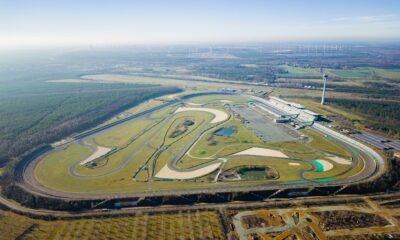

Motorsport Feature Articles
/ 8 months agoLausitzring EuroSpeedway – Germany’s Racing Venue with a Tricky Triangle
When NASCAR fans think about a racetrack that is in the shape of a...
-
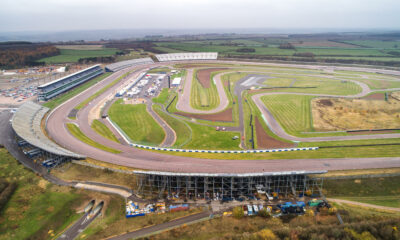

Motorsport Feature Articles
/ 8 months agoThe Brief Racing History of England’s Rockingham Motor Speedway
The town of Corby in Northamptonshire was once known for steel production. Local steelworkers...
-
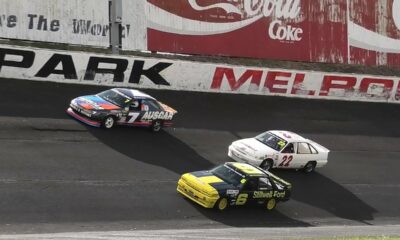

Motorsport Feature Articles
/ 8 months agoThe Unforgettable Legacy of Calder Park Thunderdome: Australia’s Sole NASCAR Superspeedway
In the 1960s, a group of Holden FJ car enthusiasts searched for a place...

Motorsport Feature Articles
Lausitzring EuroSpeedway – Germany’s Racing Venue with a Tricky Triangle

Motorsport News
Juan Pablo Montoya’s Big Return to NASCAR!

Motorsport Feature Articles
The Brief Racing History of England’s Rockingham Motor Speedway

Motorsport Feature Articles
The Unforgettable Legacy of Calder Park Thunderdome: Australia’s Sole NASCAR Superspeedway

Motorsport Feature Articles
The Brief Racing History of England’s Rockingham Motor Speedway

Driver & Team Profiles
Team Profile: RLR MSport (RLR Motorsport)

Motorsport Feature Articles
Lausitzring EuroSpeedway – Germany’s Racing Venue with a Tricky Triangle

Driver & Team Profiles
Shane Van Gisbergen: 2024 Nascar Season So Far

Andrea Kimi Antonelli
Driver Profile: Andrea Kimi Antonelli – The Journey to Formula 2 Success

Motorsport Feature Articles
The Unforgettable Legacy of Calder Park Thunderdome: Australia’s Sole NASCAR Superspeedway

Formula One
F1: 2024 Monaco Grand Prix In Review











